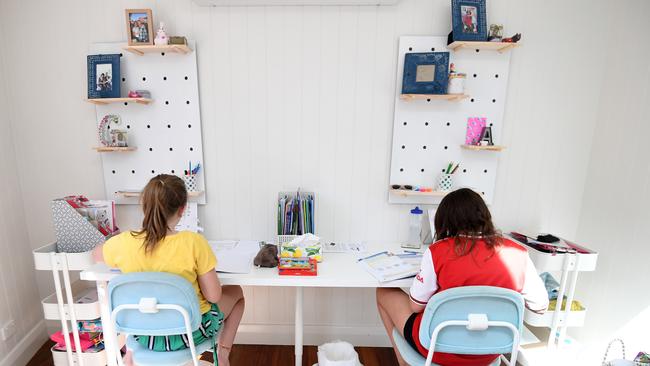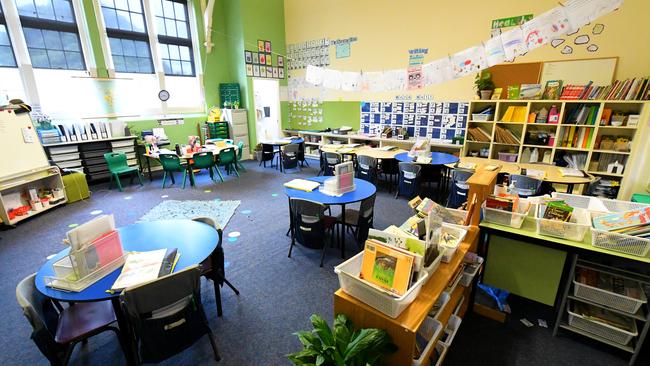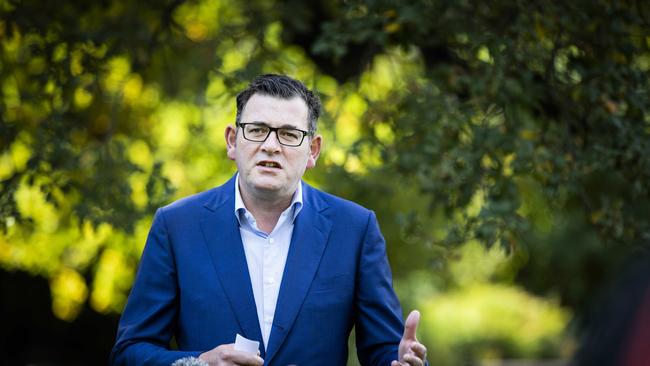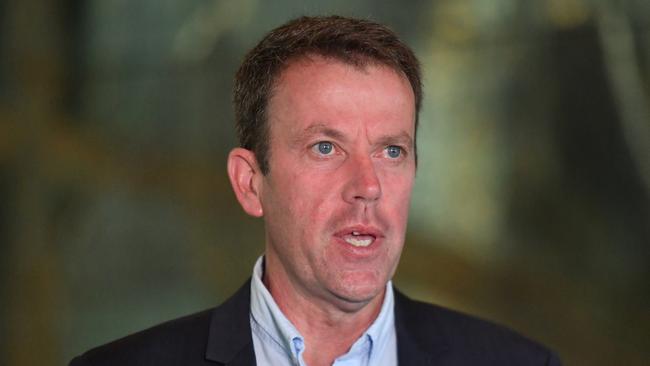Why remote learning isn’t helping kids, parents or teachers in coronavirus pandemic
Letting our kids return to school is not only better for them, but also for parents and teachers, given many are supervising their own kids as well as online classes, Susie O’Brien writes.

Susie O'Brien
Don't miss out on the headlines from Susie O'Brien. Followed categories will be added to My News.
Victorian schools should reopen as soon as possible.
After a few days of home schooling, it’s clear that kids should be at school rather than at home.
It’s better for them and it’s better for parents. It’s also better for teachers given that many are supervising their own children as well as conducting classes online.
As daily numbers of COVID-19 cases continue to drop, restrictions should start to ease, not only to boost our wellbeing, but to kickstart economic recovery.
An essential part of this process is getting kids back to school.
There can be no “high economic reward” — as Premier Daniel Andrews puts it — unless kids are in class, freeing parents up to work.

Andrews has promised social distancing could be relaxed in coming weeks.
He and his state counterparts should start by returning year 11 and 12 kids to school.
A gradual reintroduction of grades would ensure there is room for students to stick to strict social distancing rules.
Less independent learners in Foundation to year two could be next, and other year levels could follow when it’s appropriate.
As schools are reopened, it’s imperative that they are made as safe as possible.
Each school should put in place strict social distancing measures such as staggered attendance times, a shorter day, and restrictions on playground movements and play.
Of course, it all depends on COVID-19 numbers staying so low, but the signs are good.
While home schooling is working in some households, for most it is difficult.
Working parents are getting very little work done. And in many cases, only a small amount of learning is taking place, and children are being minded rather than taught by parents.
Teachers are doing the best they can, but children in lower grades are doing educational tasks rather than curriculum-based studies.

Our children deserve more than mere babysitting.
It’s important to remember that the number of children with the virus is very low.
Fewer than 300 children have had COVID-19 in Australia out of more than 6000 cases — and no one under 40 has died from the disease in this country.
The much lower number of children with the virus is well documented overseas.
According to Queensland Health, children made up 2.4 per cent of cases in China and 1.2 per cent in Italy.
There were few deaths of children in China and none in Italy.
The children who have the disease all caught it from family members or close adult contacts. There is a low rate of community transmission cases in Victoria, and none among children.
There have also been no reports of identified transmission of COVID-19 from child to another child or from a child to an adult.
This means there is very little possibility of a spontaneous outbreak of the virus among schoolchildren.
There may be some children who have the virus, but do not appear unwell or have any symptoms.
But there is also a very low rate of asymptomatic transmission among adults, let alone children.
Rather than urging parents to let parents keep their children at home where they can, schools should accept more children when they can.
At present only 3 per cent of Victorian students are attending school and principals rather than parents are deciding who can come and who cannot.
This is not how it’s meant to work.
At one eastern suburbs’ primary school, a nurse had her request for her child to be at school denied by the principal.
Some schools have allowed as few as two children to attend, putting enormous pressure on parents.

There is considerable scientific evidence from bodies such as the Australian Health Protection Principal Committee that school settings have little impact on the epidemiology of the virus. Other studies by the Organisation for Economic Cooperation and Development show schools are less important than workplaces in terms of the spread of the disease.
A study from University College London, published in The Lancet, also found schools had have a relatively small impact on the coronavirus' spread.
The study noted that school closures typically flatten the peak of outbreaks but have a modest effect on the eventual number of cases.
Federal Education Minister Dan Tehan said he would like to see a consistent national approach to “getting students back into the classroom in the next three to four weeks”.
But Victoria has not always followed the national lead in these matters.
Andrews has said he is willing to review the decision to close schools until the end of term two if the low numbers of cases continue.
He must stick to this promise or risk losing the confidence of Victorians if social distancing measures are out of step with how people are feeling.
We were willing to stay home, pull kids out of school and take an economic hit when COVID-19 cases were soaring, but now that things have stabilised, people want schools to reopen safely.
Let teachers do their job, let us get back to work — even from home — and let’s get the recovery under way.
MORE SUSIE O’BRIEN:
WE NEED TO EASE SOME LOCKDOWN RULES
WHY I’LL TAKE MY TEEN DRIVING IN LOCKDOWN
Susie O’Brien is a Herald Sun columnist.

